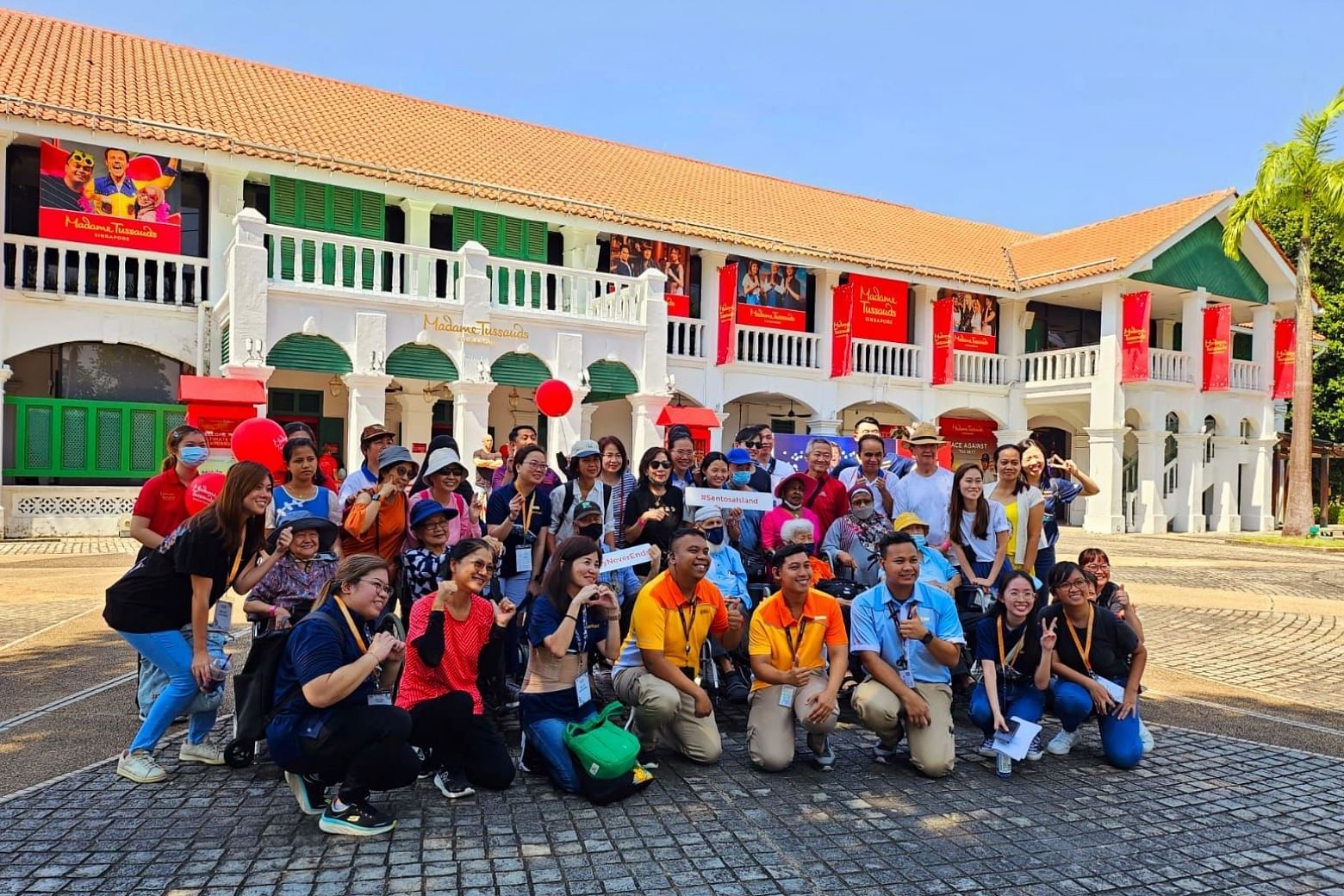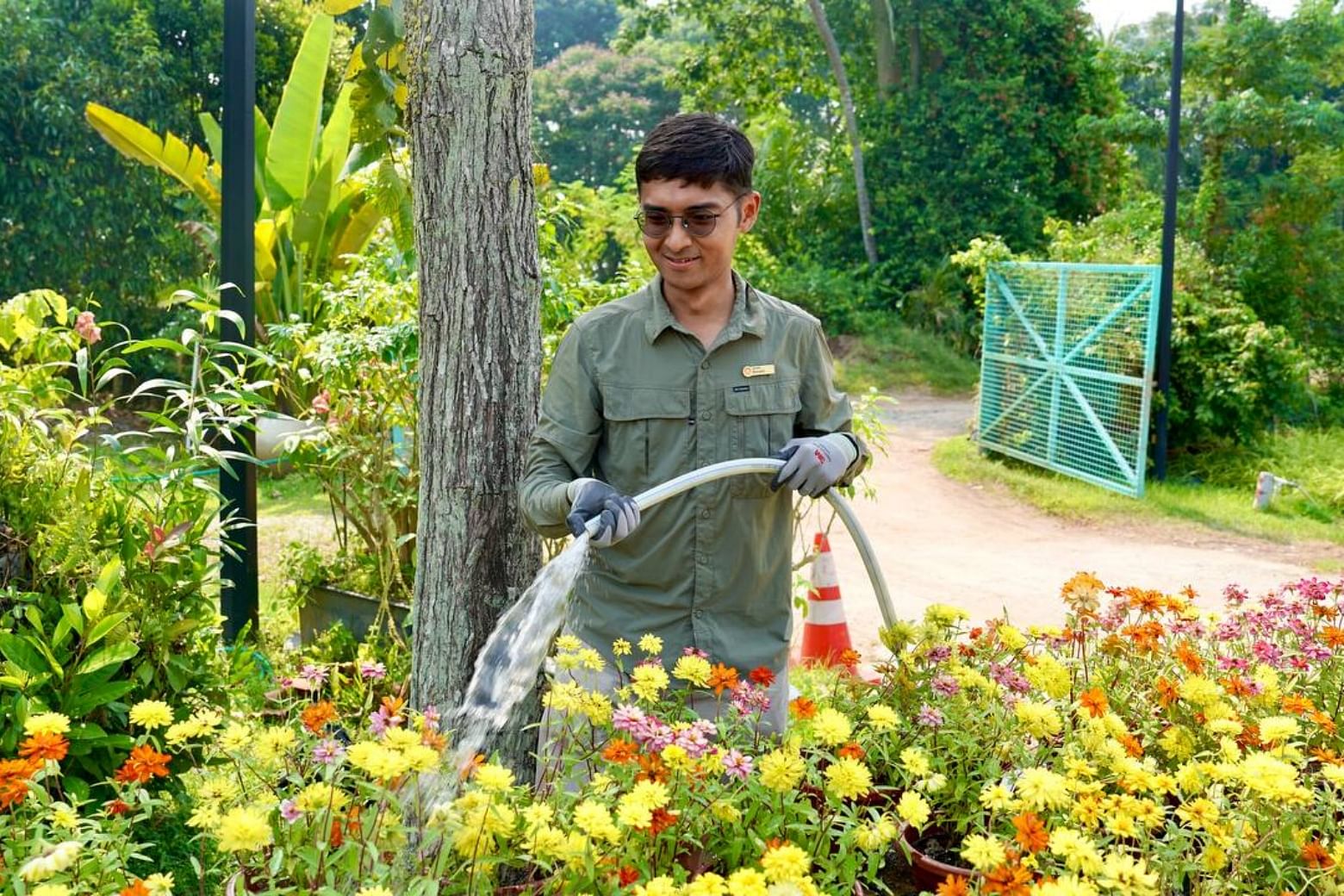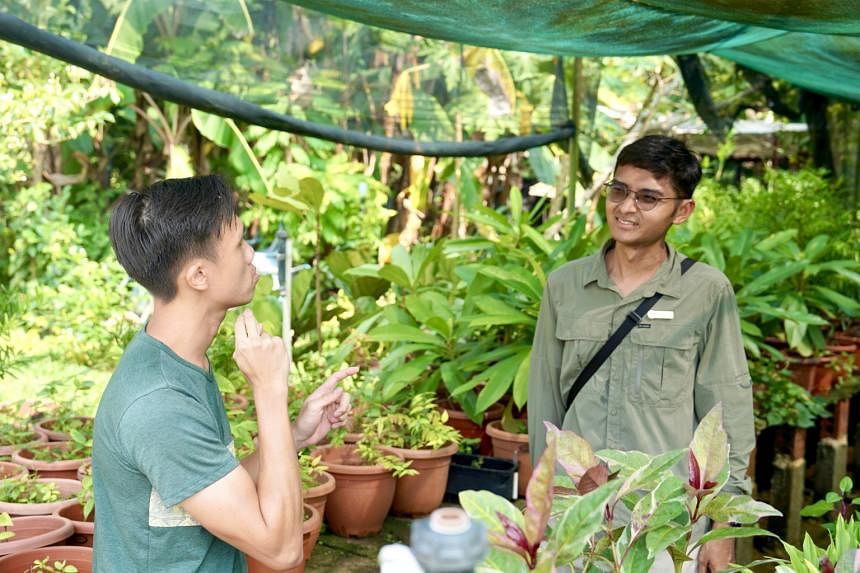At Sentosa, wireless microphones serve a distinct purpose in meetings: Not to amplify voices – but to build bridges.
Mr Ronald Batchelor, a senior horticulturist with Sentosa Development Corporation (SDC), “listens” and participates in such discussions at work with the help of wireless microphones. These are connected to his phone, translating his colleagues’ words into text.
From time to time, one of his colleagues sitting beside him may also look over his phone to check if the words transcribed are accurate, he shares via email. This helps to ensure that Mr Batchelor, 39, who was born deaf, doesn’t miss any part of the conversation.
“Growing up, I realised that deafness is an invisible disability as we look just like anyone else. You may not know I am deaf until you call me from behind and realise I do not respond to your voice.”
Efforts at SDC to address his accessibility needs have helped. Says Mr Batchelor, who has a bachelor’s degree in environments (landscape management) and has been working at Sentosa for six years: “I am genuinely thankful for my team. They have been very adaptable, which has helped us overcome any communication barrier.
“We usually communicate through emails, Skype, WhatsApp, the notes function on our phones and even sign language.”
SDC collaborates with local social enterprise Don8uri to organise sign language classes for its employees. Mr Batchelor also teaches sign language to his colleagues regularly.
Meanwhile, videos at SDC’s town hall meetings come with captions, and a recent company event featured a live video of sign language interpretation.
These are just some of the ways SDC is improving inclusivity on the island. And it is gearing up for more.
Transforming experiences
Last September, SDC signed a three-year memorandum of understanding (MOU) with the Ministry of Social and Family Development (MSF) and SG Enable.
Under the MOU, the three organisations will create “a destination experience at Sentosa island with inclusive spaces, programmes, and services through social innovation”, says SDC’s divisional director for Human Resource and Administration, Ms Linda Lee.
SDC is a statutory board under the Ministry of Trade and Industry that is in charge of developing and managing Sentosa. SG Enable is Singapore’s focal agency for disability.
“There is a clear alignment of our social inclusivity focus with what we do best as a tourism destination,” notes Ms Lee, 60. Such initiatives to improve inclusivity also provide a sense of purpose for staff who find meaning in aligning their values with a socially responsible organisation, she adds. SDC currently has five employees with disabilities.
One of its key events is Sentosa Cares Week – an annual event where SDC and businesses open up Sentosa’s attractions to more than 1,000 persons with disabilities, their caregivers, and underprivileged families. It was launched last year.

About 200 SDC staff volunteers served as island hosts, including staff with disabilities. They developed 14 itineraries across six days, with the goal of creating meaningful experiences.
For Mr Batchelor, the indoor skydiving experience with iFly Singapore was the most “meaningful and memorable”, as he got to “witness the joy of those who tried this unique flying adventure for the first time”.
Besides fun activities that are suitable for all, how else can destinations be more inclusive?
With the support of SG Enable, disability awareness workshops were also conducted during Sentosa Cares Week for staff to better understand, engage and communicate with colleagues and guests with special needs, shares Ms Lee.
Mr Batchelor believes that efforts to improve communication and accessibility are key. For example, destinations can provide more visual displays of information (such as videos with captions), incorporate simple sign language or gestures in staff interactions, and design more wheelchair-friendly pathways and facilities.
Ms Lee adds: “By embracing inclusivity, we create an environment that resonates with a broader audience, so that all visitors can feel valued and included. In turn, we hope to inspire more to appreciate, value and respect differences.”
Transforming livelihoods
SDC – alongside 18 businesses across the island dubbed ‘Sentosa Cares Champions’, who have pledged to participate in its inclusivity initiatives – will leverage SG Enable’s programmes to train employees to build inclusive workplaces.
They will work with SG Enable and MSF to provide mentorship, hiring and internship opportunities for persons with disabilities, and people from families in rental housing under the Government’s ComLink initiative.
Says Ms Ku Geok Boon, chief executive officer of SG Enable: “The Sentosa Cares Champions span industries, from hospitality and entertainment to F&B and retail, forming 80 per cent of the island’s workforce.
“There is significant potential for the hiring of individuals with diverse skill sets, including persons with disabilities.”
The national employment rate of people with disabilities aged 15 to 64 stood at 31.4 per cent from 2021 to 2022, according to figures released by the Ministry of Manpower last February. Singapore aims to increase the employment rate to 40 per cent by 2030.
Siloso Beach Resort, a Sentosa Cares Champion, currently employs about 18 staff with intellectual and mixed disabilities, accounting for over a third of its total staff strength.
“Our staff with disabilities make valuable contributions to our hotel operations and workplace culture, and are dedicated employees,” says a spokesman for Siloso Beach Resort. “Many of them have worked with us for five to 10 years.”
A study commissioned by SG Enable in 2022 found that, on average, workplaces that have more disability-inclusive practices scored 9 per cent higher on having a culture of learning and growth. Employees of inclusive organisations also tend to report having a greater sense of purpose.
A major hurdle, however, is that onboarding and training these employees require more resources and patience. But “this becomes much easier if there is already a supportive and inclusive environment in place”, says the Siloso Beach Resort spokesman.
This is something that Mr Batchelor has experienced firsthand. Beyond the day-to-day communications, SDC also engages a dedicated sign language interpreter from the Singapore Association for the Deaf to accompany him to events that do not provide a sign language interpreter.
This includes the 14th Asia-Pacific Orchid Conference held at the Singapore Expo last year. He says: “I learnt a lot about the rediscovery and conservation of native orchids in Singapore through the efforts of comprehensive biodiversity surveys of the forests.
“Support like the use of technology and sign language interpretation has significantly influenced my professional growth. They have been invaluable in helping me read and understand discussions during meetings, enriched my learning experiences, and helped me to hone work-related skills.”

Since August 2022, SDC has been working with human resources leaders from businesses across the island to improve workplace inclusivity. This network was formalised last June as the One Sentosa HR Network.
Its members take turns to host quarterly meetings, where upcoming inclusivity opportunities and ongoing inclusivity practices are shared. Organisations such as SG Enable are invited to take part in such meetings.
SDC also encourages Sentosa Cares Champions to attain the Enabling Mark, a national accreditation by SG Enable that recognises organisations that adopt these practices.
“Through leveraging the strengths of our partners, we can achieve the collective goals that we are unable to accomplish alone, and take positive action towards inclusivity,” says SDC’s Ms Lee.
SG Enable will support the organisations at every stage of their inclusive hiring journey, shares Ms Ku. This ranges from equipping them with the necessary knowledge and skills through courses and resources, to providing consultancy services and grants to subsidise the cost of job redesign and training.
Ms Ku adds: “This will enable greater participation of persons with disabilities in community life – whether as employees making a living and interacting with customers, or as visitors having fun with their families and friends.
“It helps to break down stereotypes and normalise experiences of interacting with persons with disabilities, making Singapore a more inclusive society.”
This was produced in partnership with the Ministry of Social and Family Development, in support of the Year of Celebrating Social Service Partners.

